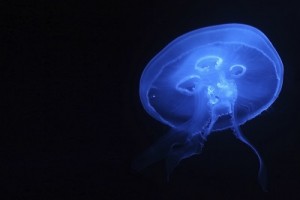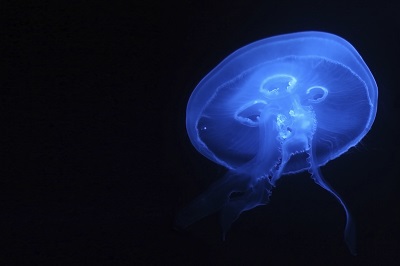 Some animals glow under ultraviolet light. Jellyfish are a prime example of these glowing animals. Under normal conditions, worms do not glow.
Some animals glow under ultraviolet light. Jellyfish are a prime example of these glowing animals. Under normal conditions, worms do not glow.
However, scientists have been able to genetically alter some worms so that they will glow under an ultraviolet light. To do this, scientists engage in genetic engineering. They inject the gene that makes jellyfish glow into the worm.
Even though jellyfish and worms are very different animals, their genes, like the genes of most living things, are actually quite similar. So, the worms with the injected gene will glow just like jellyfish do.
[am4show have=’p8;p9;p28;p55;’ guest_error=’Guest error message’ user_error=’User error message’ ]
A glowing worm is kind of cool, but what is the actual scientific benefit to this? It turns out that glowing worms can actually tell scientists quite a lot about what’s going on inside the worm. Observers can actually see the nervous system in action, so they can observe how nerve cells communicate with each other. This is far more powerful than a dissection, because the observer is able to see how things work while the worm is alive. The function, rather than just the structure, of the animal can be observed. This technique, of adding a gene to make an organism glow and then looking at how a certain body system works, has been used with other organisms besides worms.
It is important to point out that these glowing worms are not the same as the animal commonly called a glowworm. Glowworms are actually not worms at all (although they do look somewhat like worms.) They are actually insects in the larval stage which have the property of bioluminescence, which is defined as the ability to emit, or give off light. In glowworms, the bioluminescence is generally the result of a chemical reaction between the waste product of the larva and oxygen. When the insect undergoes metamorphosis and reaches the adult stage, it will no longer exhibit bioluminescence.
[/am4show]


Cool! I never knew that!